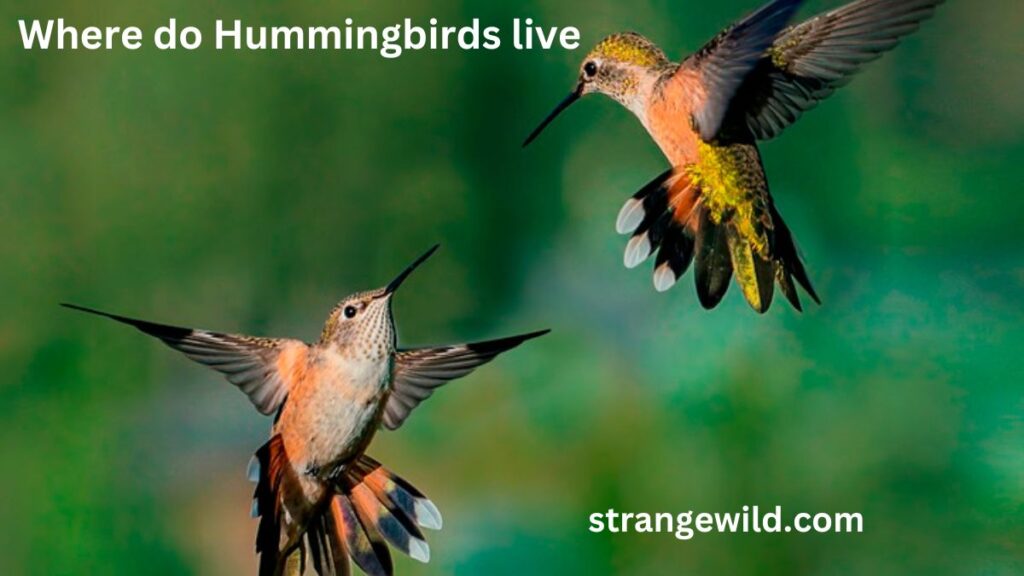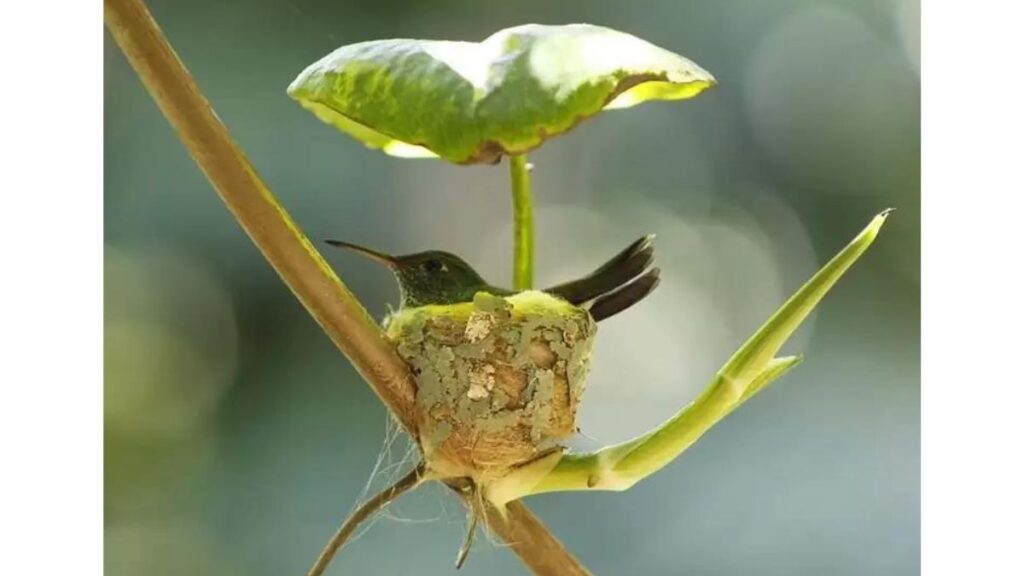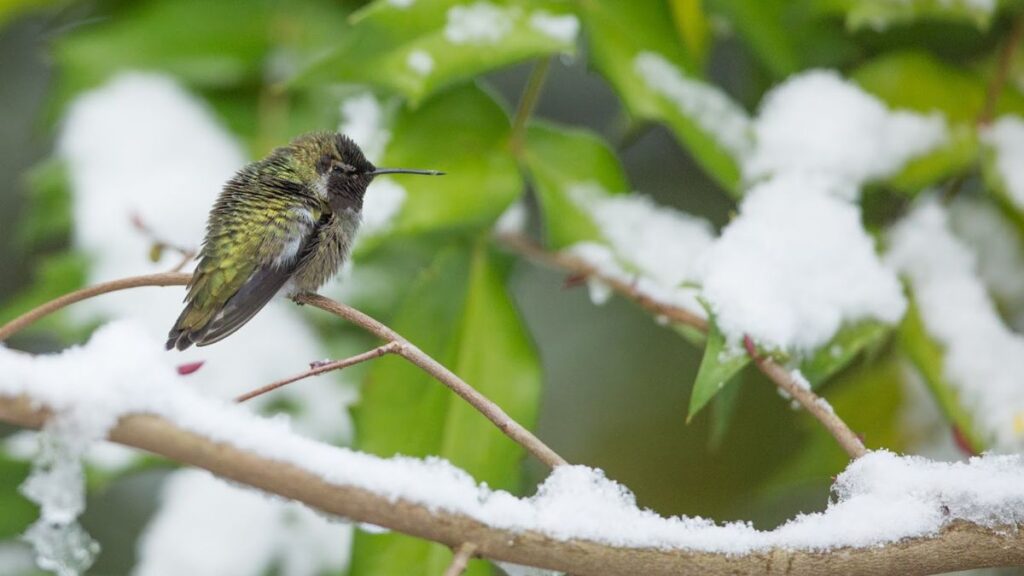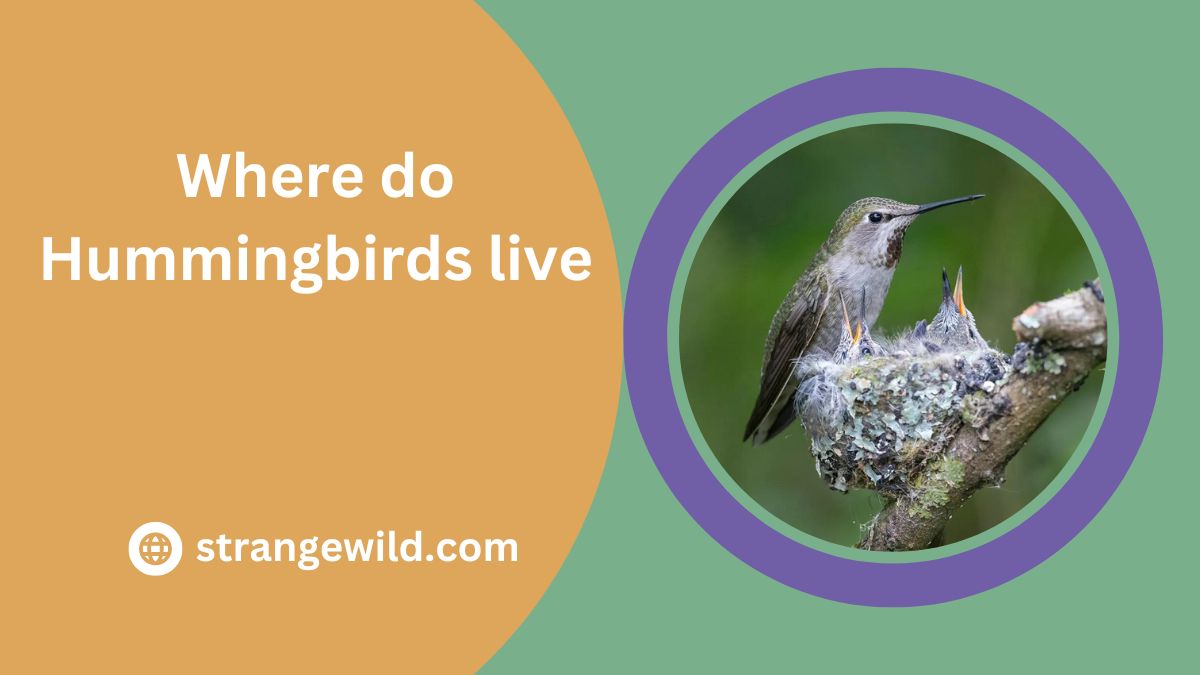Where do Hummingbirds live? Have You Wondered
Where do Hummingbirds live? The hummingbird’s only other home is in America. As far north as Alaska and as far south as Chile, they can be found. But the bulk of hummingbirds live in South America. The majority of hummingbirds flourish in grasslands and meadows, as well as in forested and wooded regions with an abundance of flowers. There are some species, nevertheless, that can survive quite well in various settings. Such as big cities, hot and cold places, desert settings, and places where it snows.
Additionally, they have a wide range of habitats, from high in the Andes Mountains to 14,000 feet below sea level. However, the majority of hummingbirds choose to reside in South and Central America, where they can be seen all year round with some of them migrating north annually.
Hummingbirds are used to seeing people in their habitats and will approach anyone they feel comfortable with. Some of them even drink from a feeder that a person is holding. Some individuals could be persuaded to cage-keep these amiable little birds. But you should be aware that neither this is legal nor is it helpful for the small hummingbird’s free will. Birds like parrot

What is Hummingbird? Where do Hummingbirds live
The similarly interesting swifts are the hummingbirds’ closest relatives, and they both belong to the avian family Trochilidae. Hummingbirds are tiny (weighing only 2 to 20 grams) and have long, narrow bills, and tiny wings that resemble sabers.
Males (and rarely females) frequently have a beautiful gorget, which consists of tiny, stiff, vividly colored feathers on the upper chest and throat. When a hummingbird turns its head to catch the sun and display its strong, metallic spectral hue, the feathers around its head and other shining parts may initially appear sooty black. Types Of Birds
The Americas are home to hummingbirds
High-energy birds like hummingbirds need regular access to food sources. Because of their way of existence, they are forced to move as the seasons change in order to coincide with the plant species’ blossoming periods. When and where hummingbirds choose to settle down for the next time are frequently influenced by the constantly shifting flower production patterns in different seasons. They don’t solely rely on flowers that provide nectar, though. Pet Bird Species
Additionally, hummingbirds will consume insects and tree sap, especially in the summer (which is usually the breeding season). Since they require the protein to construct their nests and feed their young.
Patterns of Hummingbird Migration: Where do Hummingbirds live
Hummingbird migration patterns are among their most amazing features. In the fall and spring, they move thousands of miles, one of the few tiny species to do so, just like other migrating birds. From their winter residences in southern Mexico, Central America, and South America, they migrate.
Hummingbirds migrate through the lowlands of the western United States in the spring. Alaska, Arizona, California, Hawaii, Idaho, Montana, Nevada, New Mexico, Oregon, Utah, Washington, and Wyoming are among the states that are mentioned.
They traverse the mountain on their way back in the summer, tracking and observing the flowering of the meadows. First arrivals are rarely noted in high-elevation regions, such as the northern states, until around April or May. The main source of food for hummingbirds is the sap wells that woodpeckers carve out of tree sides.
When the woodpeckers are not around, they sneak up on the sap wells formed by the birds and sip the sugary, sweet sap. On this map, hummingbird sightings around the United States can be checked and followed.
Where Hummingbirds build their nests? Where do Hummingbirds live

The primary objective of the hummingbird is to ensure that its young are adequately shielded from the elements, including wind, rain, sun, and predators. As a result, they pick protected areas for their nests. These could be areas that resemble dense shrubs or areas near plants’ slender branches. Or the forked branches on trees, but for the added protection they provide thorny shrubs or thickets are preferred.
Hummingbirds vary in size from species to species despite being small in general. The Bee Hummingbird, the tiniest bird on earth, weighs only 2.2 grams, while the largest weighs about 20 grams. As one might expect, these tiny flying insects have incredibly little nests, which are frequently no larger than the shell of a half-walnut. These tiny, resembling velvet cups are made of moss and plant fragments that have been braided together with spider web threads.
These tiny nests are works of natural architecture, built to care for and shelter one of the world’s most delicate little birds. One to three small eggs, about the size of tiny pearls, are laid in the nest by the female hummingbird. From the time the nest is first built until the young birds are old enough to depart and fly on their own, it may only take 5 to 8 weeks.
However, certain hummingbirds are resourceful and can occasionally construct their nests in unusual places, such as:
- Christmas light strands dangle from slender wires or clotheslines
- On top of lamps, inside porch lights, or outdoor security cameras
- On top of wind chimes, statues, or more garden ornaments
- Within a basketball hoop or soccer goal net
- Where the cactus’s spines will shield the nest
- On top of pipes, sprinkler fittings, or any external structure in the ceiling
The female may frequently land on it to evaluate its stability while hunting for a good place to build a nest. If she uses that location, it must be strong enough to hold her weight, the nest, and her developing young. Hummingbirds are practically weightless, therefore any location is acceptable.
How high a hummingbird will build her nest relies largely on the species of hummingbird she is as well as the areas that are available. They often erect their nests somewhere between three and sixty feet above the surface. If there isn’t a closer, adequate site, they’ll even build it approximately half a mile from food sources.
Where do hummingbirds spend the colder months?
Being the tiniest birds on the planet, it’s amazing that these helpless, helpless little beings can survive the bitterly cold winter months. They are, however, visible in North America, which is indisputable proof. Contrary to popular belief, there are winter hummingbirds and the cold doesn’t truly pose a threat to their little bodies.
Adam Hadley, the state ecologist for Oregon, conducted tests that revealed birds typically migrate north during the winter. Are born with the capacity to reduce their body temperature from 107 degrees to 48 degrees. Where do Hummingbirds live
As a result, their bodies enter a brief phase of “torpor,” a form of energy conservation. The hummingbird can survive for extended periods without eating much food because its metabolic and cardiac rates are significantly reduced while it is in torpor mode.

Several factors, including the following, explain why hummingbirds that struggle in cold climates are visible in winter:
- It may be a migratory bird that arrives early or stays late, but it seeks to mark its territory to entice a mate
- In keeping up with the migrating group, it moved too slowly
- It can be a young person who was abandoned and has little migratory experience
Hummingbirds can enter torpor when temperatures drastically drop, as was already established. Regardless of how much energy they can preserve, their survival is not certain. Keep in mind that these little birds are compelled to modify their diet and feed on insects because there are few to no nectar-producing flowers during the winter.
Where do hummingbirds migrate, when do they do it, and why?
Hummingbirds make two migrations each year: a southward migration and a northward migration. Hummingbirds are the smallest birds on earth, so their long migrations—which may be hundreds or even thousands of miles long—really drain their vitality. They go all the way to Canada during their spring migration from Mexico and South America.
The birds travel alone, and their only goal is to get to their breeding grounds as soon as possible so they may stake out the greatest food areas. Due to this intense pressure, their migration begins in Mexico in early February and ends in Alaska and Canada in the middle of May. Their fall migration happens roughly at the same time.
The hummingbird migration begins in the later part of July, and the last of the straggling birds will only reach the southern US by the end of October. Records indicate that hummingbirds originated in South America after migrating from Asia about 22 million years ago. Where do Hummingbirds live
Several species began migrating to Central America, the Caribbean, and ultimately the continent of North America after becoming established in South America. These clever tiny birds didn’t have to fight for both territory and food since they migrated to areas with plenty of food. Naturally, the seasonal chilling drove them south every fall. The hummingbirds’ present migratory patterns are based on this seasonal cycle of withdrawing and advancing.
Advice on how to spot hummingbirds: Where do Hummingbirds live
Hummingbird watching is more than just a fun activity. However, watching them may also be soothing, especially if you can do so from your own backyard!
Following are some helpful hints for monitoring hummingbirds:
The feeders- Place your feeders adjacent to flowers that hummingbirds are already visiting, as well as close to perches or shelters like trees or shrubs. You can see it from inside your home and it’s out of the sun. Avoid placing the feeder in a wide-open, lifeless yard.
Go red! — Make sure your feeder has a red top and/or base because hummingbirds seem to have a special affinity for the color red.
Create nectar on your own — It’s simple to make your own hummingbird nectar. You may make it by combining 1 part refined sugar with 4 parts warm water.
Nectar feeders should be hung around your garden — Not only will this bring more hummingbirds into your yard for you to watch, but it will also. Parrot
However, it will also prevent such bullies from scaring off other birds. These tiny birds may be small, but some of them have attitudes that are far too violent for their tiny bodies! Where do Hummingbirds live?
FAQs: Where do Hummingbirds live

Hummingbirds build their nests somewhere, right?
To shield their young from the wind, rain, and sun, hummingbirds build their nests on secure trees or shrubs. And predators of hummingbirds like bluejays, crows, cats, hawks, kites, kestrels, and shrikes.
Typically, they build their nests in the branch’s fork. And more frequently in catkin-bearing trees and shrubs, including alder, birch, sweet chestnut, hickory, willow, and witch hazel.
Hummingbirds migrate for what reason?
Hummingbirds migrate in search of warmer climates in order to escape the chilly winter. By mid-April or May, they begin showing up in gardens, where they remain until the time comes for them to depart once more in the fall.
Hummingbirds move how far?
One migration for some hummingbirds, like the Rufous Hummingbird, can cover up to 4000 km. In all of North America, this hummingbird species has traveled the greatest distance. A hummingbird can fly up to 23 miles in a day, according to research. But hummer birds making the journey from Florida to the Yucatan fly around 500 miles in just under a day, nonstop.
Where do nighttime hummingbird nests exist?
Hummingbirds seek out a secure location to spend the night. They favor building their nests in bushes or trees that are protected from chilly winds.
Do hummingbirds visit the same location each year?
Hummingbirds can visit the same spot year after year thanks to their exceptional recall. But if your garden’s flowering plants or your nectar feeders don’t provide them with enough nectar, they can fly away and never come back. A single feeder should be kept up all year.
When are hummingbirds most active during the day?
The two times of day, when hummingbirds are most active, are shortly before dawn and late in the afternoon. They rest during the daytime since flying and hovering over flowers require a lot of energy. They can also be observed during the day in a well-shaded garden with plenty of bushes and trees.





